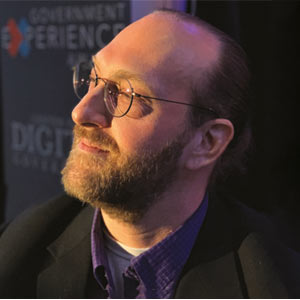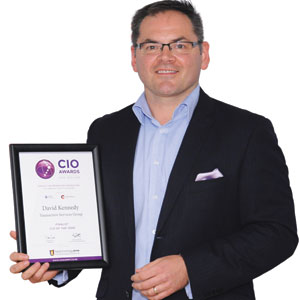THANK YOU FOR SUBSCRIBING

Introducing Smart City Solutions into Highly Regulated Municipal Environments
Nelson Gonzalez, Assistant It Director/Ciso, City Of Coral Gables


Nelson Gonzalez, Assistant It Director/Ciso, City Of Coral Gables
As technical leaders we carry the burden to oversee critical of cybersecurity strategies, compliance management, infrastructure modernization, innovation, and future proofing of digital assets. In the last five years, an additional complexity has been added into the mix. We were asked to garner and present real time intelligence from technology environments originally designed and implemented as isolated and freestanding from intrusions and threats (the smart city paradigm). Traditionally, systems that support critical functions such as public safety resided in silos governed by their own set of security and compliance requirements. However, the need to provide real time intelligence to commanders, investigators, and municipal managers drove strategies to rethink and remodel processes.
As early as 2016 technology leaders in local governments were challenged to serve goals like:• Providing municipal managers, law enforcement, and business owners with real time actionable data that yields maintenance plans, smart policing strategies, staffing plans, route optimization, traffic mitigation, to help them improve the quality of life for constituents, business owners, tenants, and visitors.
This endeavor begins by having internal deliberations to understand the technical changes and improvements that will be needed to serve the goals being presented, identify potential funding sources, select a team of technology professionals that will spearhead these efforts, identify challenges the team will have to overcome, develop a strategic plan outlining the approach that will be pursued and how it will be adopted, and obtain the approval from upper management and key stake holders. An effective plan must include:
Effective planning• Interview key stakeholders to minimize gaps in the design and yield optimal results
• Modernize and expand the existing infrastructures to enable the desired communication while maintaining the necessary security in place
• Identify viable funding sources to implement these enhancements
• Identify cost savings to deploy proofs of concept to show the potential of the proposed solution and get the necessary approvals to proceed
• Create an internal steering committee with the necessary players from other departments to ensure all processes are properly followed and avoid unnecessary delays by minimizing rework
• Break the implementation into phases that yield immediate value to stake holders on a short-term basis
• Keep cost down by using internal talent, collaborating with other agencies and academia
• Choose sensors and actuators capable of serving multiple purposes
Allow the project leader to stay involved in the execution phases to ensure the final product reflects the intended outcome. Having a technology leader spearhead, the effort from beginning to end helps eliminate scope creep, overcome obstacles quickly, and ensure security and compliance are never sacrificed to provide a solution. An effective execution approach must include:
• A thorough risk assessment and governance framework
• Enhance the existing communications backbone with enough capacity to support multiple layers of segregated smart city device types with the appropriate categorization, filtering, monitoring, and intrusion prevention controls.
• Backbone enhancements must be phase-approached
• Each phase must provide the necessary enhancements to deliver value
• Prepare the backbone with physical and logical multi-layer segregation
• Filter layers from each other and the enterprise network using a least access, least knowledge principal
• Categorize devices and applications by the type of data they generate, transmit, or access, and whether that data is deemed public or sensitive and place them in the appropriate layer
• Develop internal and publicly accessible smart dashboards to provide actionable and real time data to municipal managers, citizens, and stakeholders
• Properly sanitize each data set and ensure it is presented to the appropriate dashboard only
• Only allow one-way presentation data out of the Internet of Things (IoT) environment to be pushed to the dashboards
• Deploy the right technology and physical systems
• Cameras capable of serving as CCTV and IoT sensors that produce actionable data for traffic improvements and business planning
• Smart Light fixtures capable with integrated people counters and public announcements
• Multi-tenant poles capable of hosting many IoT functions
-
Having A Technology Leader Spearhead, The Effort From Beginning To End Helps Eliminate Scope Creep, Overcome Obstacles Quickly, And Ensure Security And Compliance Are Never Sacrificed To Provide A Solution
Following such principles technology leaders can successfully provide actionable data to managers and stake holders to support informed decisions in shorter time frames. Use technology as an integral part of municipal planning, rather than simply a necessary tool to achieve it.
To conclude, this concept is intended to yield a highly efficient smart city environment comprised of three hardened layers that continuously generate actionable intelligence as follows:
Smart Policing Layer:CCTV, ALPR, ShotSpotter, Speed Radars, Video Analytics. This layer is secured and governed employing FDLE/CJIS, DHS, NIST, and ISO- 27001 standards. This environment must remain fully segregated from the rest of the Smart City Ecosystem and its data used for internal purposes.
Municipal Management Layer:SCADA, HVAC, structural Integrity, Actuators, Facility Management, Municipal Management Dashboard. This layer is also secured and governed employing FDLE/CJIS, DHS, NIST, and ISO-27001 standards. This environment must remain segregated from the rest of the Smart City Ecosystem and its data used for internal purposes.
Economic Development and Citizen Engagement Layer:Environmental, Traffic Sensors, Public Wi-Fi, Digital Kiosks, Mobile and Way Finding apps, Trolley and Fleet Managements Apps, Smart City Hub, Transparency Portals, Public Sentiment Analytics, etc. This more public layer may be secured and governed employing NIST, ICS, and ISO.












